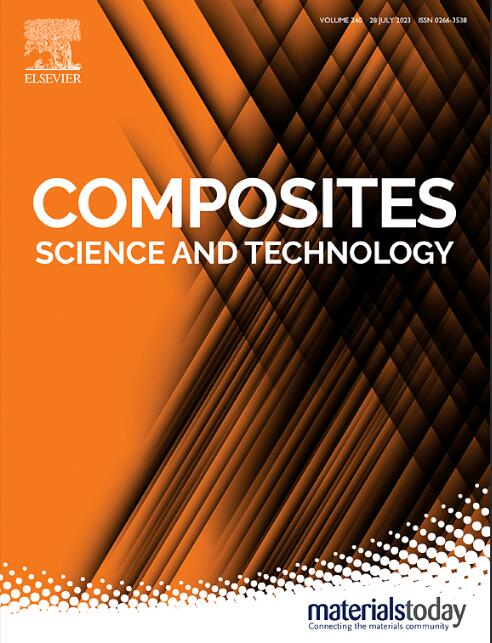优雅设计的生物基碳/聚苯胺超复合材料可调的负和近零响应
IF 8.3
1区 材料科学
Q1 MATERIALS SCIENCE, COMPOSITES
引用次数: 0
摘要
具有ε′-负(EN)和ε′-近零(ENZ)响应的超复合材料以其创新的功能相和基体相随机结构设计为特征,已成为一类极具发展前景的电磁超材料。本文介绍了一种具有双层结构的新型生物基碳/聚苯胺(BC/PANI)超复合材料。这些复合材料中的双导电网络由木质素衍生的三维碳多孔网络作为功能相和导电聚苯胺(PANI)网络作为基体组成,成功地实现了高度可调谐的ENZ (|ε'| <;1)和EN (ε′<;0)无线电频段内的参数。电偶极子共振和等离子体振荡都对100 kHz-40 MHz区域的EN响应有贡献,这一点得到了洛伦兹-德鲁德模型的验证。ENZ频率(190 kHz - 418 kHz)以及ENZ响应的幅度和频散受到BC网络和双层结构的精确调节。在聚苯胺基体中引入多孔BC网络降低了复合材料中的等效载流子浓度,从而降低了ε′的绝对值。此外,通过利用BC/PANI-PANI双层界面上的电偶极子竞争机制,ENZ频率附近的频率色散显著最小化。利用等效电路分析方法,阐明了EN材料电相关系的演变过程,揭示了EN材料的电感特性。这项工作通过创新的微观结构设计丰富了超复合材料的种类,为可调ENZ和EN响应提供了基础。本文章由计算机程序翻译,如有差异,请以英文原文为准。
Elegant design of biobased carbon/polyaniline metacomposites for tunable epsilon-negative and epsilon-near-zero responses
Characterized by the innovative random structure design of functional and matrix phases, metacomposites with ε′-negative (EN) and ε′-near-zero (ENZ) responses have emerged as a highly promising class of electromagnetic (EM) metamaterials. This work introduces novel biobased carbon/polyaniline (BC/PANI) metacomposites with a bilayer structure. The dual conductive network in these metacomposites consists of a three-dimensional, lignin-derived carbon porous network as the functional phase and a conductive polyaniline (PANI) network as the matrix, successfully achieving highly tunable ENZ (|ε'| < 1) and EN (ε' < 0) parameters within the radio-frequency band. Both electric dipole resonance and plasmonic oscillation contribute to the EN response in the 100 kHz-40 MHz region, as validated by the Lorentz-Drude model. The ENZ frequencies (190 kHz–418 kHz), as well as the magnitude and frequency dispersion of the EN response, are precisely regulated by the BC network and bilayer structure. The introduction of the porous BC network within the PANI matrix reduces the equivalent carrier concentration in the metacomposites, thereby lowering the absolute value of ε'. Furthermore, by leveraging the electric dipole competition mechanism at the BC/PANI-PANI bilayer interface, the frequency dispersion near the ENZ frequency is significantly minimized. The evolution of the electrical phase relationships in EN materials was elucidated using an equivalent circuit analysis method, revealing their inductive characteristics. This work enriches the category metacomposites through innovative microstructure design, providing a foundation for tunable ENZ and EN responses.
求助全文
通过发布文献求助,成功后即可免费获取论文全文。
去求助
来源期刊

Composites Science and Technology
工程技术-材料科学:复合
CiteScore
16.20
自引率
9.90%
发文量
611
审稿时长
33 days
期刊介绍:
Composites Science and Technology publishes refereed original articles on the fundamental and applied science of engineering composites. The focus of this journal is on polymeric matrix composites with reinforcements/fillers ranging from nano- to macro-scale. CSTE encourages manuscripts reporting unique, innovative contributions to the physics, chemistry, materials science and applied mechanics aspects of advanced composites.
Besides traditional fiber reinforced composites, novel composites with significant potential for engineering applications are encouraged.
 求助内容:
求助内容: 应助结果提醒方式:
应助结果提醒方式:


